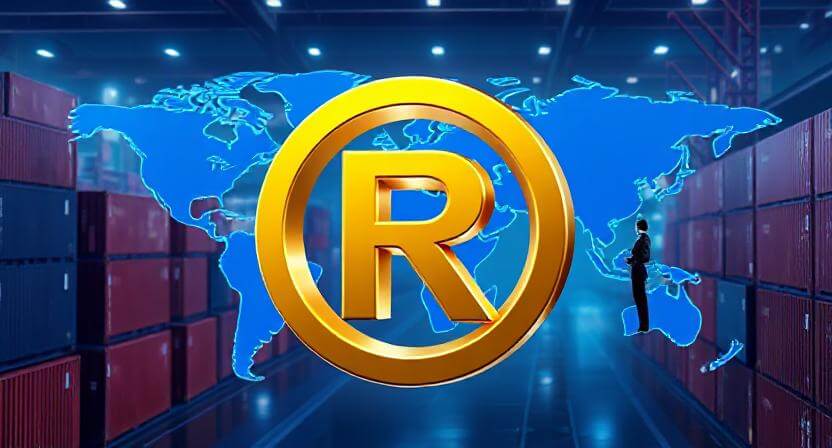The Impact of U.S. Trademarks on Tariff Determination: A Legal Analysis under Rules of Origin
 In international trade, Rules of Origin (ROO) play a vital role in determining tariff rates, eligibility for preferential treatment under trade agreements, and the implementation of various trade policies. However, can trademarks, as brand identifiers, influence tariff determination? Especially under the U.S. trademark law system, what is the relationship between trademarks and rules of origin? This article explores this issue and analyzes the potential impact of trademarks on tariffs.
In international trade, Rules of Origin (ROO) play a vital role in determining tariff rates, eligibility for preferential treatment under trade agreements, and the implementation of various trade policies. However, can trademarks, as brand identifiers, influence tariff determination? Especially under the U.S. trademark law system, what is the relationship between trademarks and rules of origin? This article explores this issue and analyzes the potential impact of trademarks on tariffs.
I. The Core Role of Rules of Origin
Rules of origin are used to determine the “economic nationality” of goods and are mainly categorized into two types:
-
Non-preferential rules of origin: Applied in the context of Most-Favored-Nation (MFN) tariffs, anti-dumping, countervailing measures, etc.
-
Preferential rules of origin: Applied under free trade agreements (e.g., USMCA, CPTPP) to grant preferential tariffs.
Origin determination is typically based on:
-
Wholly obtained criterion (e.g., agricultural or mineral products entirely produced in one country);
-
Substantial transformation criterion (e.g., changes in tariff classification or meeting value-added thresholds).
While trademarks do not directly determine origin, they may indirectly affect customs' assessment of a product's true source.
II. U.S. Legal Requirements for Trademarks and Country of Origin Markings
The U.S. Customs and Border Protection (CBP) requires imported goods to be correctly marked with their country of origin (e.g., "Made in China"). Trademarks, on the other hand, serve to identify brands. According to the U.S. Tariff Act and the Lanham Act:
-
Trademarks must not mislead consumers: If a trademark implies origin in a specific country (e.g., “American Eagle”) but the product is actually manufactured elsewhere, it may be considered a false designation of origin, leading to legal consequences.
-
"Made in USA" claims are strictly regulated: The Federal Trade Commission (FTC) mandates that only products "all or virtually all" made in the U.S. can carry a "Made in USA" label. Otherwise, penalties may apply.
III. Do Trademarks Affect Tariff Determination?
1. Generally: Trademarks Do Not Directly Affect Tariff Rates
Tariff rates are primarily based on a product’s Harmonized System (HS) code and country of origin. A trademark does not change the HS classification. For example:
-
A pair of “Nike” shoes made in China and an unbranded pair of shoes, if classified under the same HS code, will be subject to the same tariff rate.
2. Exceptions: Trademarks May Indirectly Influence Customs Valuation or Origin Verification
-
Trademark license fees: If licensing fees are included in the transaction value of the goods, they may impact the customs valuation (under the WTO Valuation Agreement).
-
Anti-circumvention investigations: If a company shifts production locations using licensed trademarks to avoid duties (e.g., goods from China rebranded and exported through Vietnam), CBP may examine whether substantial transformation has occurred and may trace the real origin.
-
Geographical indications (GIs): For instance, "Champagne" must originate from a specific region in France. Unauthorized use of such terms may lead to seizure or higher duties.
IV. Case Studies
Case 1: U.S. Investigation into “Trademark-Origin Washing” of Chinese Goods
In 2020, the U.S. enhanced scrutiny on Chinese exports (e.g., aluminum products). It was discovered that companies relabeled goods via third countries (e.g., Malaysia) using different trademarks to evade anti-dumping duties. CBP concluded that no substantial transformation occurred and reaffirmed China as the country of origin, imposing high tariffs.
Case 2: “Made in USA” Trademark Lawsuit
In 2022, the FTC sued a company for falsely labeling products as “Made in USA” when key components were imported. While this case did not directly affect tariff rates, it highlighted the importance of aligning trademarks and origin labeling with regulatory compliance.
V. Recommendations for Businesses
-
Ensure alignment between origin markings and trademarks: Avoid trademarks that may mislead consumers regarding the country of origin (e.g., using a national name inconsistent with actual production).
-
Properly declare trademark license fees: If such fees affect the transaction value, they must be disclosed to customs authorities.
-
Utilize trade agreement benefits: Products meeting ROO under agreements like USMCA can enjoy reduced tariffs, but full documentation must be provided.
-
Mitigate anti-circumvention risks: When engaging in cross-border manufacturing, ensure substantial transformation occurs and avoid relying solely on trademark changes to shift perceived origin.
VI. Conclusion
While U.S. trademarks do not directly determine tariff rates, they may influence tariff determinations indirectly through customs valuation, origin verification, or anti-circumvention investigations. Businesses should manage trademarks and origin markings in full compliance with legal requirements to minimize trade risks and optimize tariff outcomes.
Share this page
